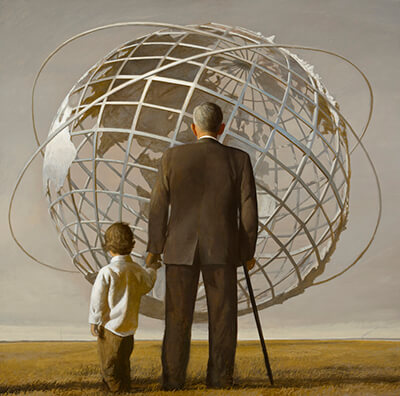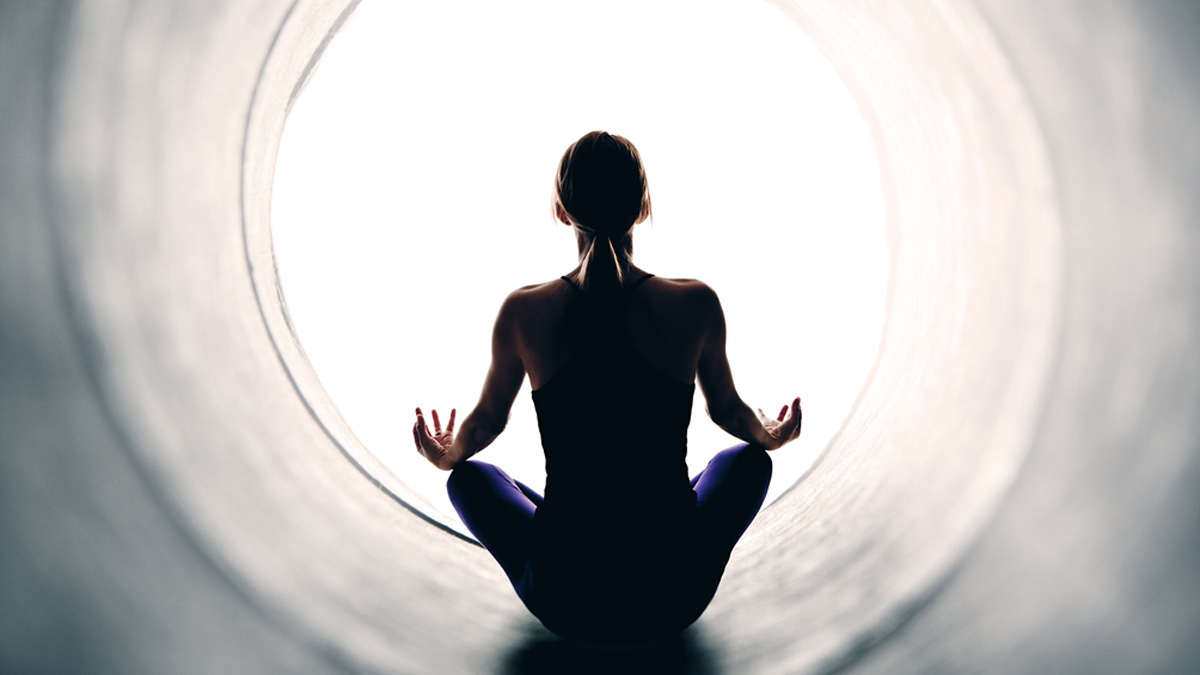
This Integral Life Practice module was lovingly produced for Integral Life members.
Become a member now for just $1 for the first 7 days, get access to hundreds of perspectives, practices, videos, and audio recordings, and support the global Integral Movement.
Start Your Integral LifeIn the empty Witness, in the great Unborn, there is no death—not because you live forever in time—you will not—but because you discover the timelessness of this eternal moment, which never enters the stream of time in the first place. When you are resting in the great Unborn, standing free as the empty Witness, death changes nothing essential.Ken Wilber
In this excerpt from the Okay, I’m Dead… Now What? web course, acclaimed teacher Andrew Holecek offers guided instructions for two fundamental forms of meditative practice: Shamatha and Vipashyana meditations.
Although the following practices were intended to help prepare for the inevitability of death, these aren’t just practices for dying. They are practices for living. They are practices to help you awaken more fully, to live more consciously, and to love more completely. It just so happens that the qualities of an awakened life are the exact same qualities that will help ensure that your death will be as painless, meaningful, and free of regrets as it possibly can be.
What is Shamatha Meditation?
If by eternity is understood not endless temporal duration but timelessness, then he lives eternally who lives in the present.Ludwig Wittgenstein
Shamatha, or calm abiding meditation, is a fundamental form of mindfulness meditation. Mindfulness is a powerful preparation because it does not disintegrate at death. If we cultivate proficiency in this one practice alone, it will act as a spiritual lifeline that we can hold on to during the bardos, and that will guide us through their perilous straits.
One of the best preparations for death is learning to accept it and to be fully present for it. Being fully present is the essence of mindfulness, which is developed through shamatha. Because death isn’t comfortable, it’s difficult to be with. As Woody Allen said: “I’m not afraid of death, I just don’t want to be there when it happens.” Most of us aren’t there for our deaths and therefore make it more difficult. To get a feel for this, recall how hard it is to be fully present when you’re sick. Most of us just want out.
Even for an advanced practitioner, it can hurt when the life force separates from the body. Resistance to this hurt, to death, or to any unwanted event, is what creates suffering. We can prepare to embrace the discomfort of death by embracing every moment with mindfulness now. Replace opposition with equanimity. As Dzogchen Ponlop Rinpoche says, when we are a dying person we should be a dying person fully. Don’t try to be a living person when living is not what’s happening.
The simplicity of mindfulness belies its profundity. It is the gateway to immortality. The philosopher Ludwig Wittgenstein said, “If by eternity is understood not endless temporal duration but timelessness, then he lives eternally who lives in the present.” Trungpa Rinpoche and Padmasambhava agree. They taught about the four ways to relate to the experience of time, emphasizing the fourth moment. The first three “moments” relate to the conventional experiences of past, present, and future. The fourth moment is timeless, and therefore immortal. It’s beyond the first three. The fourth moment is the immediate experience of the bardo of dharmata, which as we will see, transcends time and space. We don’t have to die to experience the deathless dharmata. It lies quietly between each thought—not just between each life.
Mindfulness is initially cultivated by practicing “shamatha with form,” or referential shamatha. This type of shamatha uses the reference of the body, breath, or an object to steady the mind. The idea is to use a stable form—while we still have one—as a way to stabilize the mind. When physical stability disappears at death, mental stability becomes our primary refuge.
When we die, the anchor of the body is cut away and the mind is set free. If we’re not prepared for this freedom we may panic. Imagine being tossed out of a rocket into outer space. The ensuing freak-out impels us to grasp at anything that can reestablish a sense of ground. Like catching ourselves just before taking a bad spill on a patch of ice, we reflexively reach out to grab on to anything that keeps us from falling. This grasping reflex can spur us to take on an unfortunate form—and therefore an unfortunate rebirth.
What is Vipashyana Meditation?
Seeing into darkness is clarity.
Knowing how to yield is strength.
Use your own light and return to the source of light.
This is called practicing eternity.
Lao Tzu
The second main theme in The Tibetan Book of the Dead is that “recognition and liberation are simultaneous.” This relates to vipashyana, the practice of insight meditation. Shamatha pacifies the mind, vipashyana allows us to see it. By seeing our mind more clearly, we’re able to recognize how it works. This helps us relate to it skillfully. In the bardos we’re “forced” to relate to our mind simply because there’s nothing else. Outer world is gone, body is gone, so mind becomes reality. Through insight meditation we discover that whatever arises in the bardos is just the display of our mind. That recognition sets us free.
Just as recognizing that we’re dreaming while still in a dream (lucid dreaming) frees us from the suffering of the dream, recognizing that we’re in the bardos frees us from the suffering of the bardos. Before we became lucid, the dream tossed us to and fro like Styrofoam bobbing on turbulent waters. But once we wake up to the dream—while still being in it—the tables are suddenly turned. We now have complete control over an experience that just controlled us. Whether in dream or death, this level of recognition, and ensuing liberation, is cultivated with vipashyana, or “clear seeing.”


